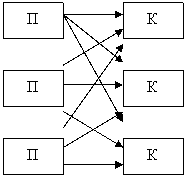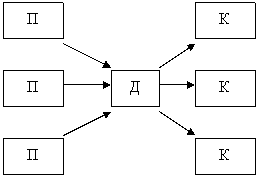home
 Marketing Marketing
 Basics of Marketing - Kotler Philip Basics of Marketing - Kotler Philip
|
Basics of Marketing - Kotler Philip
The nature of distribution channels
Most manufacturers offer their products to the market through intermediaries. Each of them seeks to form its own distribution channel.
A distribution channel is a collection of firms or individuals that take over or help transfer someone else ownership of a particular product or service on their way from producer to consumer.
Why do we need intermediaries?
Why is the manufacturer ready to shift part of the sales work to intermediaries? After all, this means that he to some extent loses control over how and to whom the goods are sold. And nevertheless manufacturers consider that the use of intermediaries brings them certain benefits. About these benefits and will be discussed.
Many producers do not have enough financial resources to carry out direct marketing. "General Motors", for example, sells its cars with the help of 18 thousand independent dealers. Even such a corporation would have been very difficult to find money to buy out all these dealerships.
In order to achieve through the direct marketing of the economy of a mass distribution system, many manufacturers would need to become intermediaries in the sale of goods from other manufacturers. For example, the firm "U. Wrigley would have found impractical the opening across the country of small shops selling chewing gum, or selling their gum by traveling salesmen, or selling it by mail order. She would have to sell chewing gum along with a lot of other small things that would eventually turn her into an owner of either a pharmacy snack chain or a grocery store chain. So, according to the firm, it is much easier to work through an extensive network of private distributors.
But even if the manufacturer can afford to create his own distribution channels , in many cases he will earn more if he increases the investment in his main business. If the production provides a 20% profit margin, while retailing gives, according to estimates, only 10%, the firm will not want to retail itself.
The use of intermediaries is mainly due to their unmatched efficiency in ensuring wide availability of goods and bringing it to the target markets. Thanks to their contacts, experience, specialization and scope of activity, intermediaries offer the firm more than what it usually can do alone.
In Fig. 66 represents one of the main sources of savings provided through the use of intermediaries. Part "A" shows how three manufacturers are trying to reach three customers using direct marketing methods. This option requires the establishment of nine separate contacts. In part "B" shows the work of three producers through a single distributor, which establishes contacts with all three customers. With this system, only six contacts are required. That's how intermediaries help to reduce the amount of work that needs to be done.


P - manufacturer K - customer D - distributor
A. The number of contacts (P x K = 3 x 3 = 9)
B. The number of contacts (P + K = 3 + 3 = 6)
Fig. 66. How does the distributor reduce the number of necessary direct contacts


Comments
When commenting on, remember that the content and tone of your message can hurt the feelings of real people, show respect and tolerance to your interlocutors even if you do not share their opinion, your behavior in the conditions of freedom of expression and anonymity provided by the Internet, changes Not only virtual, but also the real world. All comments are hidden from the index, spam is controlled.